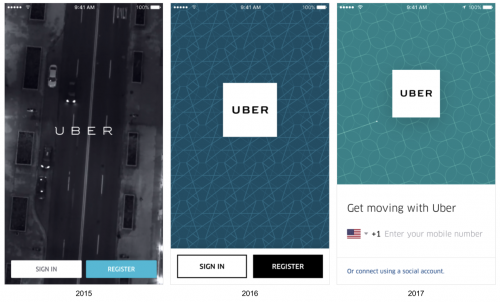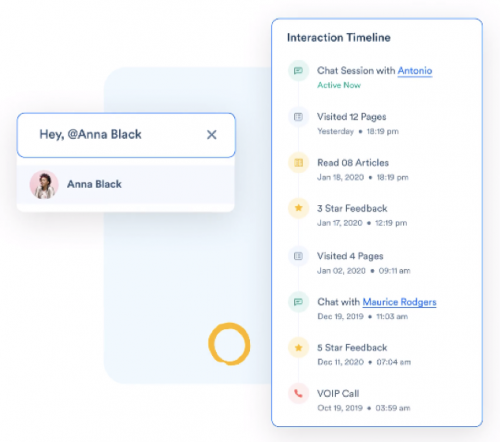
What you are doing right now will be the hallmark of your entire career – Interview with Tom Peters
March 27, 2021
Getting closer to customers means connecting with them irrespective of the logistics – Interview with Bansi Mehta of Koru UX Design
April 5, 2021This is a guest post from Dhruv Mehta, a Digital Marketing Professional who works at Acquire.io
The Customer Lifetime Value (CLV) is perhaps one of the most understated metrics for business growth. Why is it important? Well, the CLV of your company informs you how much you should spend on acquiring a customer while remaining profitable, given the fact that a 5% increase in retention produces a 25% increase in profit.
In this article, we will cover 4 tried-and-tested methods that will completely change the way your customers perceive your brand. We’ll cover from the beginning — the onboarding process, their experience in using your services, leveraging data, and taking customer feedback into account to optimize their experience.
1. Create A Seamless Onboarding Program
Customer onboarding is the testing grounds that will set the path for the lifetime value of all the new users. The moment when your consumers first sign-up is extremely crucial and will directly impact the remainder of the relationship you have with them. Hence, as you ensure sustainable growth, it is the process you should spare no effort on.
But that’s just one aspect of it. It’s extremely important to diligently strategize the onboarding process in a way that leaves the customers coming back for more, increasing their lifetime value to your organization. By working with a calculated approach, providing exemplary customer experience isn’t a pipe dream. Here’s something to consider:
Streamlined Onboarding
The entry barrier for new users must be simple to penetrate, but just as importantly, the design, the content, and even the tone should be consistent across all your channels.

For instance, if you talk about certain web features, they must reflect on the application as well. Uber is an example. This kind of visual consistency will help you gain your customers’ trust by building a positive impact and improving engagement during the onboarding stage. That’s imperative because highly-engaged customers buy 90% more frequently, spend as much as 60% more with every transaction, and have three times the annual value compared to other customers.
Make The Experience Predictable
Predictability goes hand in hand with uniformity. Both these instruments are built to understand the needs of the users. Given that, the content should be designed in a way that suits the user profile. For the consumer, it means that you are using your knowledge to anticipate their behavior and the reaction to different elements of the experience that you provide.
Achieving predictability is quite straightforward. The user just has to be able to picture a clear goal that is going to be met, and you ensure that you deliver it.
Ditch Over-Actionable Onboarding
Bombarding your customers with information, multiple calls-to-action, and unnecessary prompts are only going to deter them and clutter your screen. The goal should not be to suffocate your users with over-actionable content but to keep the experience simple.
Try to keep the number of onboarding screens to the minimum and leverage in-app UX design. For every piece of information that you are providing the user, identify if it can be simplified any further.
Automate Onboarding
Onboarding is something that you will find yourself repeatedly doing – and more often as your business grows. Since it is a recurring task, it is highly recommended that you can optimize this process by automating it. This will not only drive down your cost but will also boost the success rate in the long run. Hence, looking at the bigger picture, it will make your business more efficient.
Although it is contingent on your industrial sector, nonetheless, some ideas like using email templates and other integrated apps to speed up your onboarding process are known to work.
As far as customer onboarding goes, communicating the value of your product is the most crucial step. And if you keep doing that right and simple, you’ll be on the right track.
2. Provide Real-Time Support With Live Chat Software For A Personalized Experience
Around 80% of business buyers expect an immediate response from businesses, and the best solution for this problem is to invest in a dependable live chat software tool.

Without a doubt, live chat as a support channel is a much better solution than email because, in the case of the latter, the customer feels uncertain, and trust issues start developing since immediate help is not provided. But more than that, live chat can also help with customer acquisition and improve the onboarding experience since customers who use chat are 2.8 times more likely to convert.
Given that it’s live 24×7, live chat also increases engagement and gives you that extra edge over your competitors.
3. Use Customer Success Software
As many as 30% of SaaS companies reported that their churn rates have increased in the past year.
Reducing churn requires various actionable steps, and leveraging customer success software is one of the most accepted methods to achieve that with minimal effort. Customer success software is a tool that gives you a 360-degree view of your entire customer data gathered from various integrated tools and services like email, CRM, customer support tickets, live chat, etc.
It analyses the survey data and customer behavior and gives you a ‘health score’, helping your team prioritize your customers efficiently from their profile. Similarly, it can spot inactive customers, profit stagnation, and problems that may later result in customer defection.
The data provided by customer success software also prevents you from getting blindsided during a meeting with the customers. But more than anything else, as your business grows, this tool can help manage the pressure on your customer success and support teams and help them focus on the more actionable pain points.
4. Work On Getting Actionable Feedback From Customers
It can get extremely challenging to grow your business without knowing what your customers think about your brand. Your customers think the same, so much so that 52% of people around the globe think that companies need to take action on feedback provided by them.
The only way to improve anything is to listen to those to whom it directly caters. In order to improve your customer onboarding process, it is highly recommended to listen to the feedback that your customers provide. That said, the approach through which you seek the feedback is not as important as the feedback itself, so you are free to experiment here.
You can even design your business model around the feedbacks received in a way that prioritizes customer satisfaction along with revenue generation. As for how you get around to it, you can build a team that monitors customer sentiment online — social media, live chat, etc., store it and send it to the different departments.

If your audience is too large, you can also make use of satisfaction surveys like NPS and ask them whether they would recommend your services to their friends. A high score means that your customers are happy with you, and it will help predict the growth in your CLV.
Winding Up
The link between customer experience, the real value provided to your consumers, and the CLV is quite apparent. But make no mistake, actually building that link takes extreme patience, will, and strategic investment of resources. You may be tempted to skip this for rapid growth, but that only comes if your customers are confident in the way you channel your offerings.
Proving to your customers that you value them is the simplest path to revenue generation, and what’s a better way to show that you value them than by making their experience better whenever they associate with you?
This is a guest post from Dhruv Mehta, a Digital Marketing Professional who works at Acquire.io
About Dhruv
 Dhruv Mehta is a Digital Marketing Professional who works at Acquire and provides solutions in the digital era. In his free time, he loves to write on tech and marketing. He is a frequent contributor to Tweak Your Biz. Connect with him on Twitter or LinkedIn.
Dhruv Mehta is a Digital Marketing Professional who works at Acquire and provides solutions in the digital era. In his free time, he loves to write on tech and marketing. He is a frequent contributor to Tweak Your Biz. Connect with him on Twitter or LinkedIn.
Image by SpaceX-Imagery from Pixabay




